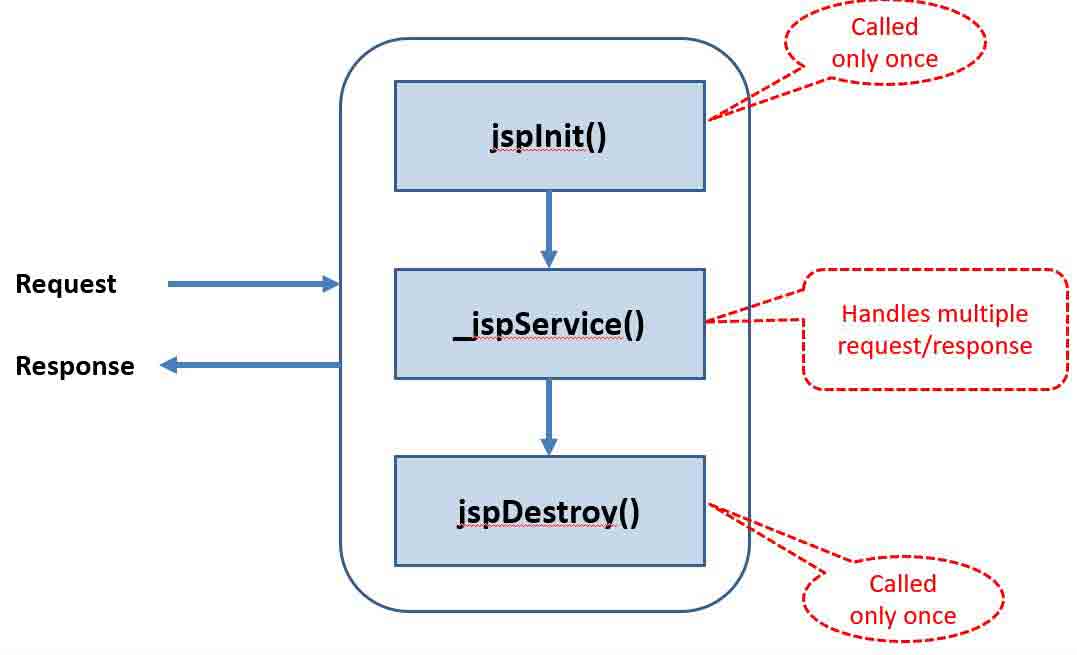Explain JSP life cycle phases.
Life Cycle Of JSP
-
A JSP life cycle can be defined as the entire process from its creation till the destruction.
-
It is similar to a servlet life cycle with an additional step which is required to compile a JSP into servlet.
-
A JSP page is converted into Servlet in order to service requests.
-
The translation of a JSP page to a Servlet is called Lifecycle of JSP.

(Figure: JSP Life Cycle)
JSP Lifecycle steps
- Translation of JSP to Servlet code.
- Compilation of Servlet to bytecode.
- Loading Servlet class.
- Creating servlet instance.
- Initialization by calling jspInit() method
- Request Processing by calling _jspService() method
- Destroying by calling jspDestroy() method
-
Web Container translates JSP code into a servlet source(.java) file.
-
Then compiles that into a java servlet class (bytecode).
-
In the third step, the servlet class bytecode is loaded using classloader in web container.
-
The Container then creates an instance of that servlet class.
-
The initialized servlet can now service request.
-
For each request the Web Container call the _jspService() method.
-
When the Container removes the servlet instance from service, it calls the jspDestroy() method to perform any required clean up.